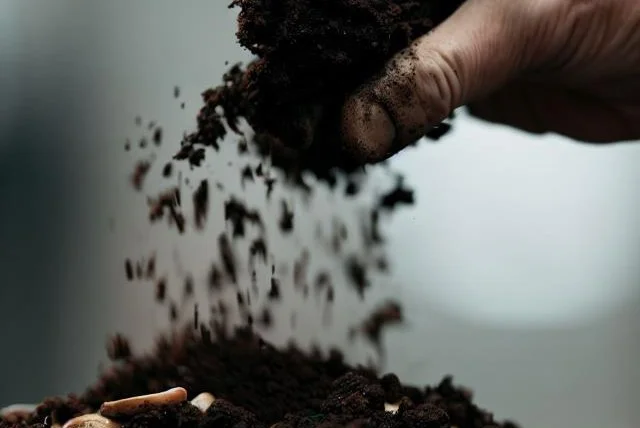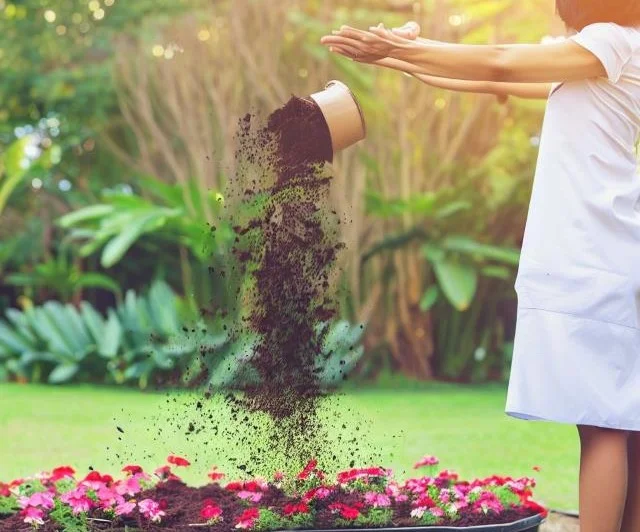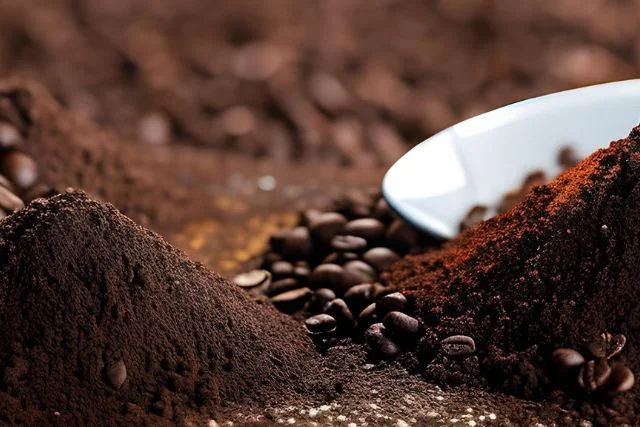Coffee Grounds and Roses: Growing Beautiful Blooms
Using coffee grounds in the garden may seem unorthodox, but science and gardening experience show this kitchen staple can provide immense benefits for roses. The chemical composition of coffee grounds makes them an excellent organic fertilizer and soil amendment. Repurposing coffee grounds also reduces waste, creating an eco-friendly gardening practice.
Are Coffee Grounds Good for Roses Key Takeaways
- Nutrient-Rich Boost: Coffee grounds offer essential nutrients that roses need for healthy growth and blooming.
- Effective Mulch: Coffee grounds as mulch retain moisture, suppress weeds, prevent erosion, and provide slow-release nutrients for roses.
- Homemade Fertilizer: Coffee grounds can be used to create an affordable and natural fertilizer that enriches the soil and promotes rose health.
- Eco-Friendly Gardening: Utilizing coffee grounds in the garden reduces waste, lowers carbon emissions, improves soil sustainability, and minimizes resource consumption while benefiting roses.
Coffee Grounds Composition

To understand why coffee grounds offer such advantages for roses, let’s examine their chemical makeup.
Nutrients in Coffee Grounds
Coffee grounds are rich in essential macro and micronutrients that roses need to thrive:
- Nitrogen: Critical for green growth and stem/leaf development
- Phosphorus: Promotes blooming and fruiting
- Potassium: Supports overall plant vigor and disease resistance
- Copper: Important for reproductive growth
- Magnesium: Helps with seed production and fruiting
- Calcium: Strengthens cell walls and structure
Coffee grounds also contain iron, manganese, boron, molybdenum, and other trace elements. This unique nutritional profile fuels diverse rose growth needs.
Organic Matter Content
In addition to nutrients, coffee grounds contain organic compounds like lignin, cellulose, and sugars. As these break down, they produce humus – the crumbly, nutrient-rich component of soil.
Humus retains water and improves soil structure. It also supports vital soil microbes that roses rely on to access nutrients. The organic matter in coffee grounds builds valuable humus content in garden beds.
Acidic Nature
With a pH of around 5 – 5.5, fresh coffee grounds have an acidic nature. When used as a soil amendment, this acidity helps unlock nutrients like iron, phosphorus, and magnesium that plants need. The pH-lowering effect also optimizes soil conditions for roses that prefer slightly acidic soils.
Using Coffee Grounds as Mulch
One easy way to harness the benefits of coffee grounds is by applying them as mulch around roses. Here’s how to mulch properly with used coffee grounds.
Benefits of Mulching with Coffee Grounds
Applying coffee grounds as a loose mulch layer offers multiple advantages:
- Moisture retention: Mulching helps soil retain water and prevents evaporation near the root zone. This supports healthy rose growth and flowering.
- Weed suppression: Coffee grounds block light and smother out weeds around roses. Less competition means more nutrients go to the plants.
- Erosion protection: The mulch blanket stabilizes soil and prevents erosion, especially on slopes/inclines.
- Slow nutrient release: As coffee grounds break down, they slowly release nutrients into the soil available for rose uptake.
- Moderated soil temperature: Mulch helps regulate soil temperature fluctuations, protecting rose roots.
- Organic matter: Decomposing coffee grounds continually replenishes valuable humus content.
Step-by-Step Mulching Guide
Follow these steps for properly applying coffee ground mulch:
- Rake the area around roses to break up clods and remove old mulch/debris. Level any low spots.
- Water roses thoroughly before mulching. Moist soil aids decomposition.
- Apply 1-2 inches of used coffee grounds in a ring around the drip line of roses. Leave a 2-inch space around stems.
- If desired, mix in thin layers of nitrogen fertilizer to balance carbon-heavy grounds.
- Let coffee grounds sit for 2 weeks before additional feeding or watering. This allows microbes to break it down.
- Reapply extra coffee grounds anytime to maintain a 1-2 inch layer. Thicker layers can mat down and hinder water/air exchange.
Coffee Ground Mulching Dos and Don’ts
Follow these coffee ground mulching tips for success:
- DO use coarsely ground coffee or crumbled spent grounds. Fine particles mat down easily.
- DO layer nitrogen fertilizer between applications to speed decomposition.
- DON’T allow coffee grounds to touch rose stems or trunks. Leave a 2-inch buffer zone.
- DON’T apply more than 2-3 inches of grounds at once. This can hinder water penetration.
- DON’T use instant coffee granules. These have greatly reduced nutrients.
Properly mulching with coffee grounds provides a slow-release fertilizer effect while boosting soil health and structure. Keep the mulch layer replenished to continuously unlock coffee ground benefits.
Coffee Grounds as Fertilizer

Beyond mulching, concentrated coffee ground fertilizers offer an easy nutrition boost for roses.
Advantages of Coffee Ground Fertilizer
Key benefits of using coffee grounds as fertilizer include:
- Balanced nutrition: The wide nutrient profile covers all rose needs – nitrogen, phosphorus, potassium, and more.
- Organic source: As an all-natural amendment, coffee grounds avoid chemical salt buildup issues.
- Low cost: Used coffee grounds are free! This reduces fertilizer costs.
- Gradual nutrient release: Coffee grounds break down slower than commercial fertilizers, providing longer-term nourishment.
- Soil improvement: Coffee grounds enhance soil texture, aeration, and water retention as they decompose.
Making Coffee Ground Fertilizer
Coffee ground fertilizers are simple to make at home:
Ingredients:
- 5 gallons used coffee grounds
- Other organic material e.g. leaves
- Water
Instructions:
- Mix coffee grounds, and organic material (if using) together in a bucket.
- Add water slowly while stirring until the mixture reaches a moist, crumbly texture.
- Allow to sit for 1-2 days.
- Apply finished fertilizer to rose beds.
Applying Coffee Ground Fertilizer
Use this method to properly feed roses with coffee ground fertilizer:
- Water roses thoroughly 1-2 days before fertilizing. Moist soil helps absorption.
- Spread fertilizer evenly around the drip line of roses. Follow package rates for commercial blends. For straight coffee grounds, apply a 1⁄2 – 1 inch layer.
- Lightly mix fertilizer into the top 2-3 inches of soil. Take care not to damage rose roots.
- Water roses after fertilizing to dissolve nutrients and spur absorption.
- Reapply monthly or as needed through the growing season to sustain nutrition.
With the right application, coffee ground fertilizers nourish roses naturally and effectively. Adjust recipes as needed to achieve optimal plant growth and flowering.
Composting Coffee Grounds

Composting offers another earth-friendly way to capture nutrients from coffee grounds over time.
Coffee Grounds in Compost
As part of a backyard compost pile, coffee grounds provide:
- Nitrogen: Coffee grounds are 20-30% nitrogen, giving compost a boost of this critical nutrient for decomposition.
- Organic material: Coffee grounds add carbon-rich matter to balance the compost carbon-nitrogen ratio.
- Surface area: The small particles offer more surface area for helpful decomposing microbes.
- Moisture: Coffee grounds hold water in the compost pile like a sponge. Proper moisture aids composting.
- Heat: As part of the composting process, coffee grounds heat up the pile’s core to desired temperatures for rapid breakdown.
Building a Coffee Ground Compost Pile
Follow basic composting best practices, and incorporate used coffee grounds:
- Chop and mix yard waste, leaves, and grass clippings to create carbon-rich “browns” for the pile.
- Add equal portions of nitrogen-heavy “greens” – coffee grounds, fruit and vegetable scraps, and plant trimmings.
- Include coarse material like wood chips, straw, or corn cobs for airflow pockets.
- Layer greens, browns, and coarse material in 6-8 inch increments as you build the pile.
- Keep compost moist but not soaked, with a cover to retain heat and moisture.
- Turn/mix the pile monthly and add new material to speed decomposition.
In 4-6 months, you will have finished composting coffee grounds to nourish roses.
Applying Composted Coffee Grounds
To safely use compost made with coffee grounds on roses:
- Test the pH of the finished compost, since coffee acidity persists. Neutralize as needed with lime.
- Mix 1 part compost into 2 parts existing soil as a topdressing or when transplanting.
- For in-ground roses, blend compost through the entire bed 6-12 inches deep before planting.
- Side-dress established roses, raking compost 2-3 inches into the soil around the dripline every 2-3 years.
Composting coffee grounds requires patience but ultimately enhances soil texture, fertility, and nutrient availability for exceptional roses.
Potential Risks and Considerations
While low risk, some potential downsides of using coffee grounds exist. Being aware of these helps avoid problems.
Salt Content
The minerals in coffee grounds are beneficial, but excess salt accumulation from overapplying grounds can potentially burn roots or leaves. Mixing grounds into soil or composting helps dilute salts.
Acidity
A heavy coffee ground application can lower soil pH more than desired for certain rose varieties. Test pH routinely, and add lime if pH dips too low.
Nitrogen Tie-Up
As a carbon-rich material, excessive uncomposted coffee grounds can initially absorb soil nitrogen. Small, incremental applications are best to avoid this.
Fungal Disease
The damp, dense nature of coffee ground mulch can encourage fungal growth in some climates. Allow mulch to fully dry out between waterings.
Preventing Problems
Follow these tips for healthy roses when using coffee grounds:
- Test soil pH and amend as needed to maintain the ideal range.
- Apply thin layers of grounds and mix into soil instead of dense mounds.
- Add nitrogen fertilizer to mulch/compost piles with coffee grounds.
- Allow coffee ground mulch to completely dry out before rewetting.
- Adjust amounts based on rose needs and observe for signs of overapplication.
With smart management, the nutritional benefits of coffee grounds can be safely harnessed.
Coffee Grounds Varieties

Not all coffee grounds are created equal. The source and grind size impact the quality of a rose supplement.
Different Coffee Ground Types
Common kinds of used coffee grounds include:
- Drip/brewed: The most widely available grounds from home coffee makers and coffee shops. These have moderate nutrient levels based on the brewing method.
- Espresso: Finely ground beans create nutrient-dense coffee grounds perfect for roses. Their fine texture breaks down quickly.
- Instant coffee: Lower-quality grounds with fewer nutrients due to extensive processing. But still useful.
- Decaf coffee: Slightly less nitrogen but still beneficial, especially for acidic soil conditioning.
Coffee Processing Methods
How coffee beans are processed before brewing also affects coffee ground quality:
- Wet-processed: Fermenting and washing beans produces higher quality grounds than dry processing.
- Dry-processed: Machine drying whole beans sacrifices some nitrogen but offers easier grounds collection.
- Roast Level: Longer roasting reduces nitrogen content through evaporation but adds more organic matter.
Look for grounds from wet-processed, medium-roast coffee beans for ideal rose fertilizer. But don’t be afraid to experiment with different sources.
Organic Pest Control with Coffee Grounds
Beyond nourishing roses, used coffee grounds deter common rose garden pests.
Coffee Grounds as Pest-repellent
Research shows coffee grounds repel destructive insects through:
- Sharp texture: Coarse, spiky grounds irritate soft-bodied slugs and snails, keeping them away.
- Caffeine toxicity: Concentrated caffeine is toxic when ingested by insects and garden pests.
- Acidic pH: The low pH of the grounds creates an inhospitable environment for several rose pests.
This makes coffee grounds a cheap, non-toxic pest deterrent.
Homemade Pest Repellent Recipes
Whip up these easy DIY repellents with used coffee grounds:
Ant Repellent
- 1 part coffee grounds
- 1 part cinnamon
- Dash of cayenne or chili powder
Slug/Snail Barrier
- Coarse coffee grounds
- Create 1-2 inch wide rings around plant bases
Japanese Beetle Trap
- Mix 3 parts coffee grounds with 1 part diatomaceous earth
- Sprinkle on soil around affected plants
Strategically applying coffee grounds keeps roses lush and healthy without dangerous pesticides. Monitor regularly and reapply after rain or watering.
Sustainability and Environmental Impact

Recycling coffee grounds positively impacts the environment in several ways.
Keeping Waste Out of Landfills
Coffee grounds are one of the biggest components of municipal solid waste. Much of this gets sent to crowded landfills.
Composting or reusing coffee grounds in the garden keeps them cycling locally rather than taking up limited landfill space. This reduces waste disposal impacts and costs.
Reducing Carbon Emissions
Transporting and discarding coffee grounds generates substantial greenhouse gas emissions. Cutting down on how often used grounds enter waste streams lowers fuel use and carbon output.
Improving Soil Sustainability
Applying coffee grounds fertilizes plants while enhancing long-term soil health and stability. The organic matter contributes to the regeneration of degraded soils.
Limiting Resource Consumption
With free and locally available coffee grounds, gardeners reduce reliance on store-bought fertilizers and pesticides. This also cuts down on plastic packaging waste.
Integrating coffee grounds into rose care is one small way gardeners can support broader environmental sustainability.
Caring for Different Rose Varieties
While all roses thrive on coffee grounds, integrative care optimizes growth for specific species.
| Rose Type | Preferences | Coffee Ground Tips |
| Hybrid Tea Roses | Neutral soil pH, consistent moisture, low humidity | Mulch to retain moisture, monitor soil pH |
| Floribunda Roses | Sunny sites, medium moisture, organically rich soil | Use coffee grounds to enrich soil texture and nutrients |
| Climbing Roses | Good drainage, support structures, moderate water | Add grounds to fast-draining soil, provide trellises |
| Shrub and Landscape Roses | Adaptable to varying conditions | Spread grounds as mulch or mix into native soil |
| Miniature Roses | Consistent moisture, good drainage, filtered sun | Spot mulch around plants, avoid overfeeding |
| Old Garden Roses | Low maintenance, tolerant of some shade, organic soils | Mix aged coffee grounds into beds before planting |
| Knock Out Roses | Self-sufficient once established, bright light | Use grounds as mulch or light fertilizer |
The nutrients and soil conditioning of coffee grounds can be tailored to different rose needs. Observe roses and adjust application rates and techniques accordingly.
Seasonal Considerations

Coffee grounds provide year-round benefits but require some seasonal adjustments.
Spring
As roses break dormancy in spring, coffee grounds supply an early nutrition boost.
- Lightly mix grounds into beds 2-4 weeks before the last expected frost
- Apply new mulch layer around emerging canes
- Feed established roses to support rapid growth
Summer
During the active growing season, coffee grounds sustain nutrition and moisture.
- Maintain mulch cover to retain water
- Spot fertilize monthly with coffee grounds or compost
- Increase shade and airflow if fungal disease appears
Fall
Transitioning roses to winter rest requires some coffee ground care shifts.
- Pull back excess mulch to harden off plants
- Do final fertilizing 6-8 weeks before the first frost
- Rake away old grounds around plants and refresh mulch before winter
Winter
For winter protection, coffee grounds offer insulation and moisture retention.
- Mound 8-12 inches of leaves or straw, mixed with grounds, around the base of plants
- Loosen covering layers in early spring to avoid pushing out new shoots pre-maturely
Adjust coffee ground care routines throughout the seasons to complement the growth stages of roses.
Maintenance and Long-Term Care
Ongoing coffee ground application sustains results over time but requires some routine maintenance.
Consistent Nutrition
Coffee grounds break down faster than synthetic fertilizers. Reapply grounds or compost every 4-6 weeks through the growing season to maintain consistent nutrition. Adjust frequency based on observed growth.
Managing Acidity
Monitor soil pH in coffee ground planting beds twice per year. Add lime or other amendments as needed to counteract acidifying effects long-term.
Preventing Salt Buildup
Avoid overapplying coffee grounds in one spot. Rotate applications around the garden and flush soils periodically with extra water to prevent excessive salt accumulation.
Aeration and Turning
Use a fork 2-3 times per year to lightly turn and mix coffee ground mulch or topdressing into the top 1-2 inches of soil. This distributes nutrients downward and prevents matting.
Replenishing Mulch
Reapply fresh coffee ground mulch anytime the layer gets thin or patchy. Maintain 1-2 inch depth around plants for benefits.
Compost Maintenance
Turn active compost piles with coffee grounds at least every other month to mix and aerate ingredients. This speeds decomposition.
With some simple maintenance steps, coffee grounds continue providing their magic for roses year after year.
Troubleshooting Guide
If problems arise with coffee ground rose care, refer to this troubleshooting guide.
| Issue | Cause | Solution |
| Yellow or stunted plants | Excess acidity burning roots | Test and amend pH; flush soil |
| Poor flowering | Nutrient imbalance or deficiency | Mix in balanced fertilizer |
| Slimy black mulch | Overwet coffee grounds caused fungi | Remove mulch, improve drainage |
| Wilting plants | Dense mulch repelling water | Loosen or thin mulch layer |
| Weeds in mulch | Not deep enough layer | Add more grounds to smother weeds |
| Foul odor | Anaerobic breakdown of grounds | Turn mulch layers to increase airflow |
| White crusts on soil | Salt buildup | Flush soil and reduce application rates |
| Pale leaves | Nitrogen tie-up from excess grounds | Top dress with nitrogen fertilizer |
Monitor roses closely and compare against previous growth patterns. Address coffee ground issues promptly to restore plant health.
Conclusion
Coffee grounds are an accessible, earth-friendly resource that can unlock beautiful, prolific roses with minimal cost or effort. Their stellar nutrient profile and soil conditioning abilities support plant health and flowering. Used wisely in composts, fertilizers and mulches, coffee grounds boost your garden’s sustainability while producing amazing results.
Are Coffee Grounds Good for Roses FAQs
Coffee grounds contain nitrogen, phosphorus, potassium, copper, magnesium, and calcium. These nutrients fuel rose growth and blooms.
Water roses, add 1-2 inches of grounds around drip line, leaving 2 inches near stems. Replenish as the layer decomposes.
Mix used grounds with water to a moist crumbly texture. Let sit 1-2 days. Apply to roses per package instructions.
Layer grounds as “greens” in compost pile. Maintain moisture and turn monthly. In 4-6 months, use finished compost to enrich rose soil.
Blend grounds into soil before planting Old Garden Roses. Enrich soil for Floribunda Roses. Add grounds to fast-draining soil for Climbing Roses. Spot mulch Miniatures, avoid overfeeding.








